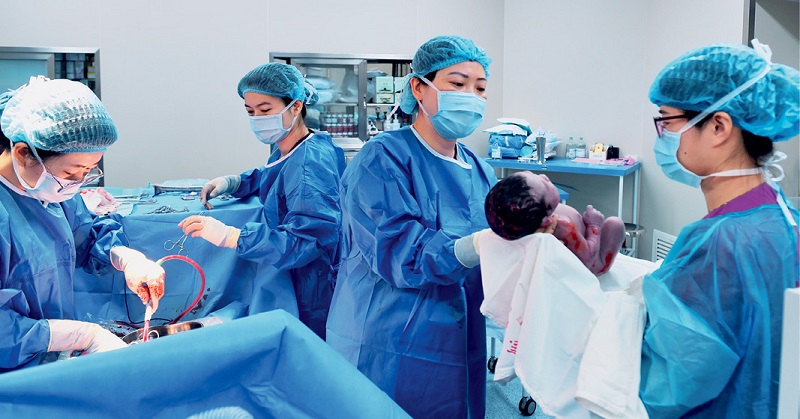
Recently, 17 central authorities issued a guideline on support for childbirth and child care – proposing measures in 20 areas including taxation, housing, education, health care, insurance, and maternity leave. The goal is to provide full-process support, from marriage to child birth and rearing, by pooling the strengths of the government, employers, and individual citizens as well, and maintain a reasonable birth rate over the long term.
These measures are extensive, specific, and targeted. They include a three-tiered network of integrated services to ensure the safety of mothers and babies, expansion of child care services and reduction in child care costs, improvement to the childbirth insurance and subsidy system, precedence for families with young children or multiple children in assignment of public housing and favorable loan policies for such families in home purchasing, tax deduction for care of children under three, and creation of parent-friendly workplaces.
The all-encompassing guideline is generally welcomed by the public for addressing some of the most intractable issues that cause the so-called “childbirth anxiety,” which prohibits Chinese couples from having any, or additional children. But some people also express doubts of the applicability of some proposed measures, such as encouraging employers to allow flexible work hours or remote working for parents of young kids. “This may be accepted by government agencies and public institutions, but is not feasible within the private sector,” said Zhao Qing, who works for a private hotel chain in Beijing. She acknowledged that as a working mom she doesn’t have the time or money for a second child. “It is stressful to raise even one,” she said.
The guideline – issued by the ministries of Finance, Civil Affairs, Human Resources and Social Security, Housing and Urban-Rural Development, Education, State Taxation Administration, and the People’s Bank of China among others – is the latest policy measure the Chinese government has rolled out in recent years to boost falling birth rates. In 2021, only 10.62 million babies were born in China, and the birth rate slipped to the lowest – 7.52 per 1,000 – since 1949, when the People’s Republic was founded. The rate was 8.5 per 1,000 in 2020.

Between 2015 – the year when the two-child policy was launched – and 2020, annual births in China edged up slightly before declining steadily: 16.55, 17.86, 17.23, 15.23, 14.65, and 12 million respectively. In the view of Jiang Baoquan, a professor with the Institute for Population and Development Studies of Xi’an Jiaotong University, the continued birth reduction in 2021 can be attributed to the ongoing epidemic, but it also represents a long-term trend. As the society and the economy develop, birth rates are continuing to go down. This is the experience of many countries around the world. In general, birth rates are lower in more developed countries. Jiang pointed out that China’s rate is close to, though lower than, major economies when they were at the same development stage.
“China’s total fertility rate stood at 1.3 in 2020, compared with 1.64 in the U.S., 1.54 in Germany, and 1.4 in Canada,” he said. In the definition by the World Health Organization, a total fertility rate is “the average number of children a hypothetical cohort of women would have at the end of their reproductive period if they were subject during their whole lives to the fertility rates of a given period and if they were not subject to mortality. It is expressed as children per woman.” A total fertility rate of 2.1 is considered the “replacement level.” The current rate of China, 1.3, is well below this bar, meaning more people die every year than are being born. In 2021, the natural growth of Chinese population was a mere 480,000, less than one quarter of the amount of 2020.
Fewer births may have profound social and economic consequences, including reduction in social security payments, higher labor costs, and less consumer demand. Consumption is critical for China’s economic upgrading. According to the National Bureau of Statistics, in 2021, final consumption expenditure was the leading contributor to economic growth, rated at 65.4 percent, compared with 13.7 percent by capital and 20.9 percent by export of commodities and services.
It is a well-known fact that China’s rapid economic growth over the past decades was supported by its demographic dividend, or its large working-age population. This bonus has been diminishing as the population is aging rapidly. The share of people aged above 65 in China’s population reached 13.5 percent in 2020, nearly doubling that of 2001, which was 7.1 percent.
To reverse this trend, China abolished the decades-old one-child policy in 2016, replacing it with a two-child limit. The birth policy was further relaxed in 2021, allowing each couple to have up to three children. But the shift led to no remarkable increase in the number of newborns as anticipated. Recognizing the multitude of factors affecting people’s birth decisions, the government has rolled out a slew of supportive policies and measures over the past years.

Nurses attend to a baby born by caesarean delivery at the Quanzhou Maternal and Child Health Hospital in Fujian Province on August 20, 2020.
For instance, the 14th Five-Year Plan (2021-2025) sets the goal of providing 4.5 spots in care facilities for children under three for every 1,000 residents by 2025. And a national plan to expand public-interest childcare services created 61,000 more such spots in 2021 alone. Paid maternity leave has also been increased nationwide. Beijing, for example, has expanded this leave from 128 to 158 days, in addition to 15 days for men. Some regions offer even more days off for new mothers. According to Pan Wei, an official with the Ministry of Housing and Urban-Rural Development, by the end of 2021, the ministry had helped more than one million families with underaged children and 69,000 families with three children secure government-subsidized rental housing.
It is believed that the combination of these targeted measures will deliver tangible results in the years to come, especially when the central and local governments, employers, and communities all work together to create a child- and woman-friendly society. Meanwhile better planning and policy coordination are needed to achieve long-term goals.
As Lu Jiehua, vice chairman of the China Population Association and a professor of sociology with the Peking University, observed: “We must understand that the current ultra-low birth rate is primarily caused by the joint effect of economic and social factors. It takes complex, systematic efforts to stimulate birth, for which long-term planning and integrated policies that address both the symptoms and root causes are needed. The experiences of other countries have shown that it is more difficult to encourage than to control births. To keep its birth rate at an appropriate level, a country or a region must have sound top-level design, and foster a full-life-cycle policy environment that is friendly to child birth and rearing.”